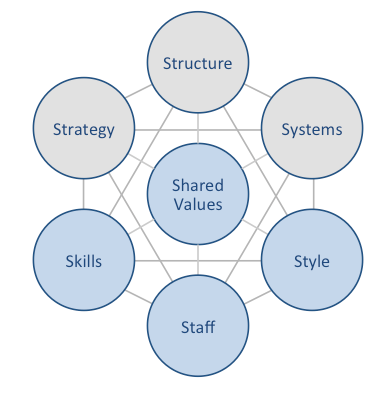
W.W. Grainger McKinsey 7S model illustrates the ways in which seven elements of industrial distribution business can be aligned to increase the overall effectiveness. The framework specifies strategy, structure and systems as hard elements, whereas shared values, skills, style and staff are considered as soft elements. According to McKinsey 7S model, there are strong links among elements in a way that a change in one element causes changes in others. As it is illustrated in Figure 7 below, shared values are positioned at the core of Grainger McKinsey 7S model. This is because shared values guide employee behaviour with implications on their performance. W.W. Grainger McKinsey 7S model Hard Elements in W.W. Grainger McKinsey 7S model Strategy Grainger pursues differentiation business strategy. The B2B distributor differentiates itself in the market by offering the widest range of MRO products. Specifically, Grainger offers about 1,7 million types of products supplied by about 5000 suppliers worldwide.[1] Moreover, the differentiation strategy pursued by the industrial supply company also relates to inventory management, technical support and differentiated sales and services. Structure Grainger has an hierarchical organizational structure with Chairman and CEO DG Macpherson sitting at the top of the hierarchy. The B2B distributor had a major restructuring in 2013 in Americas business segment. Moreover, taking into account growing competition from Amazon business, increasing integration of internet of things into industrial distribution practices and other changes in external business environment, it can be argued that Grainger organizational structure may change in the medium term perspective. It can be forecasted that changes in Grainger’s corporate structure will be directed in increasing the flexibility of the business so that it can react to changes in external marketplace more effectively. Systems There is a wide range of business systems that keep MRO products distribution at the global marketplace…
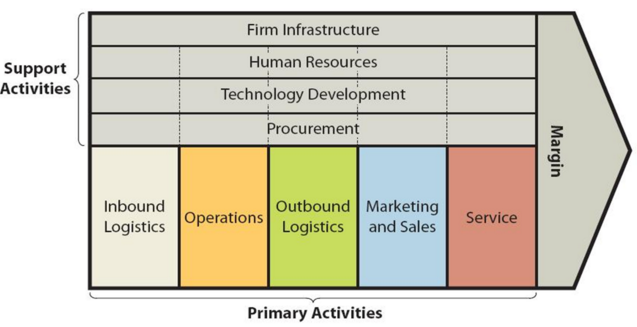
W.W. Grainger value chain analysis is an analytical framework that assists in identifying business activities that can create value and competitive advantage for global MRO products distributor. Figure below illustrates the essence of Grainger value chain analysis. W.W. Grainger Value chain analysis Grainger Primary Activities Grainger Inbound logistics Grainger inbound logistics involves receiving and storing MRO products by the global industrial supply company in its distribution centres for subsequent shipment to customers. The worldwide distributor of industrial products purchases approximately 1,7 million types of MRO products from approximately 5000 suppliers worldwide and stores them in distribution centres. Economies of scale is a major source of value creation in inbound logistics for the global industrial supply company. Additionally, the B2B distributor benefits from its strategic relationships with its suppliers in general and key suppliers in particular. Grainger Operations Grainger operations are divided into the following three segments: 1. United States segment. This segment generated sales of USD 8,6 billion in 2018, 72% of total revenue of the company.[1] The industrial supply company divides its customers in US segment into two categories according to complexity of their needs. a) Large customers in the US. Customers in this segment have complex needs and require services at their place of business. Grainger source of value creation in dealing with large customers in the US include adoption of partnership approach and assisting customers to reduce total cost of ownership in MRO spend by helping them to manage their labour, product and inventory costs. b) Medium customers in the US. This customer segment has less complex needs compared to large customers. Moreover, medium or mid-size customers in the US are mainly concerned with the solutions of their immediate business problems. Ranges and prices of products can be specified as major source of value creation…
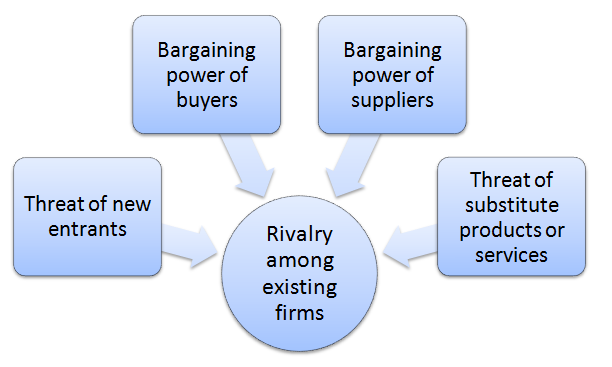
Porter’s Five Forces is a strategic analytical framework developed by Michael Porter (1979)[1]. The framework consists of five individual forces that shape an overall extent of competition in an industry. W.W. Grainger Porter’s Five Forces are illustrated in figure below: Porter’s Five Forces Threat of new entrants in W.W. Grainger Porter’s Five Forces Threat of new entrants into traditional B2B distribution is not significant. Inter-relationships of the following factors determine the extent of threat of new entrants into industrial distribution: 1. Economies of scale. Economies of scale is a critical success factor in B2B distribution. Grainger purchases more than 1,7 million types of products from approximately 5000 suppliers worldwide.[2] Accordingly, Grainger benefits from the economies of scale to a great extent with positive implications on the cost structure of the business. However, new market entrants are not able to benefit from the economies of scale to a similar extent and therefore, economies of scale emerges as an important entry barrier to the B2B distribution industry. 2. Capital requirements. Industrial distribution is a highly capital-intensive business. In order to be successful and challenge established market players, new entrants need to have wide range of products stored in warehouses and distribution centres. Substantial capital investments are needed to achieve all of these and unless new market entrants do not come up with innovative business models to disrupt the industry, capital requirements are likely to persist as an important entry barrier to the industry. 3. Expected retaliation from existing businesses. Current market players in B2B distribution are likely to retaliate against any new entrants that possess a considerable threat to their market share. This is a noteworthy entry barrier for potential new entrants to the industry. For example, once Amazon Business started to become a formidable player in the global market of…
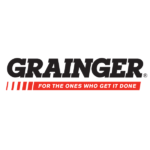
W.W. Grainger marketing strategy was traditionally limited to its famous product catalogues and print and media advertisement. The company CEO D.G. Macpherson admitted in 2019 that marketing was a new skill for the global industrial supply company, but the company was learning very quickly.[1] The necessity for improvement of Grainger marketing strategy is fuelled by intensifying competition in general, and competition from Amazon business in particular. Grainger’s total advertisement expense totalled to USD316million, USD241 million and USD187 million for 2019, 2018 and 2017, respectively.[2] Grainger unique selling proposition is associated with extensive range of MRO products and deep knowledge of company’s sales force regarding main product categories. Moreover, competitive advantages of industrial products distributor include advanced customer services and omni-channel sales strategy. Grainger 7ps of marketing has traditionally focused on product element of the marketing mix to a greater extent compared to other elements. The B2B distributor boasts an extensive product range that includes about 1,7 million types of products supplied by about 5000 suppliers worldwide. [3] Starting from a few years ago, however, Grainger marketing strategy had to change to a certain extent to increase its focus on the price element of the marketing mix. Specifically, due to the increasing threat from Amazon Business, Grainger had to cut profit margin in 2017 to decrease the prices of many products. Segmentation, targeting and positioning practices is an integral part of Grainger marketing strategy and the B2B distributor pursues multi-segment type of positioning. Specifically, the industrial supply company appeals to MRO products needs of all types of customers – small, large and medium. The company targets small and medium businesses through Zoro and MonotaRO websites, whereas large customers with more complex needs are targeted via maintaining face-to-face direct relationships with numerous Grainger sales force representatives. W.W. Grainger Report contains the above analysis…
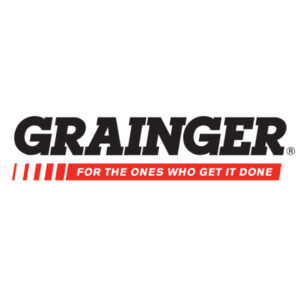
W.W. Grainger marketing communication mix is a framework that explains the application of individual elements of communication by the global industrial supply company. Individual elements of the marketing communication mix consist of print and media advertising, sales promotions, events and experiences, public relations, direct marketing and personal selling. W.W. Grainger Print and Media Advertising W.W. Grainger and its portfolio brands such as Zoro, MonotaRO and Cromwell use print and media advertising in an occasional manner. Specifically, the global industrial supply company uses TV commercials such as “Keeping America Running” and “We’ve got Your Back”, as well as, radio commercials. Additionally, the B2B distributor uses magazines, newspapers, billboards and posters forms of print and media advertising. It is important to note that despite increasing popularity of social media, up to date extensive potentials of viral marketing remain unutilised by Grainger. Lack of usage of viral marketing can be specified as one of the main shortcomings of Grainger marketing strategy. W.W. Grainger Sales Promotions W.W. Grainger uses the following forms of sales promotions: Clearance Centre on company website. The global industrial supply company offers discounts of up to 70% for some items purchased online. Money off coupons. Grainger does not offer coupons directly, but there are dozens of third-party companies such as Groupon, RetailMeNot and SlickDeals that offer money-saving coupons that can be used with the B2B distributor. Point of sale materials. The industrial supply company uses posers and display stands in its 457 branches worldwide[1] to increase the visibility of popular products and product categories. Customer Loyalty Program. Global MRO products distributor has Red Pass Plus Program that offers customer a set of advantages such as free next day delivery and savings of up to 15% on thousands of products.[2] W.W. Grainger Report contains a full…
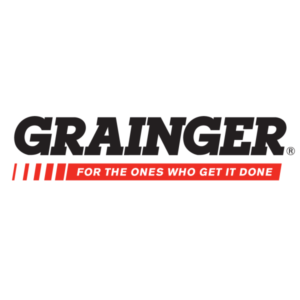
W.W. Grainger segmentation, targeting and positioning refers to ways in which the global industrial supply company chooses specific companies among large base of potential customers and develops its product and service offering to appeal to the needs of a few chosen customers. Segmentation involves dividing population into groups according to certain characteristics. Grainger uses a set of segmentation criteria such as region, size of the company, turnover and potential annual MRO spending. Moreover, complexity of customer needs is an important segmentation criteria extensively employed by the industrial supply company. Targeting is the next stage after segmentation and it is associated with selecting specific groups to sell products to. Positioning refers to the selection of the marketing mix that appeals to the needs and wants of the target customer segment to the maximum extent. Grainger uses multi-segment type of positioning and accordingly, the B2B distributor exploits more than one segment at the same time. Specifically, Grainger positions its Zoro and MonotaRO websites to appeal to the needs of small and medium-sized customer segment with simple needs for MRO products. Different customer segment with more complex needs on the other hand, are targeted via High-Touch Solutions value proposition, which involves sales and service representatives, KeepStock inventory management system and collection of orders from branches. There are important differences between B2C (business-to-customer) and B2B (business-to-business) segmentation. These differences include the following: 1. More complex and rational decision making. Decision making process by Grainger target customer segment is complex and rational. It is opposite to B2C segment, where appeal can be made to customers’ needs on emotional level to influence the purchasing behaviour. This fact has direct implications on Grainger positioning in a way that the global industrial supply company has to base its value proposition on measurable and tangible advantages. 2. Complexity of…
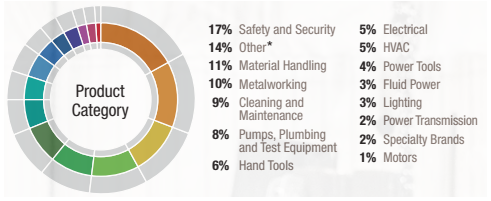
W.W. Grainger marketing mix (Grainger 7Ps of marketing) comprises elements of the marketing mix that consists of product, place, price, promotion, process, people and physical evidence. Product Element in W.W. Grainger Marketing Mix Grainger offers about 1,7 million types of products supplied by about 5000 suppliers worldwide. In 2019 no single product category comprised more than 17% of the global sales.[1] The figure below illustrates product categories of the global industrial supply company. Moreover, the B2B distributor offers certain services such as inventory management and technical support. Grainger Product Categories Place Element in W.W. Grainger Marketing Mix Grainger primarily operates in North America, Japan and Europe. The industrial supply company utilizes a wide range of sales channels such as online, mobile devices, sales representatives, local branches and product vending machines on customer sites. In 2018, 62 percent of Grainger’s revenue in the U.S. came from online channels, making it the 10th largest e-retailer in North America, according to Internet Retailer.1 Through Grainger.com, eProcurement connections, KeepStock solutions and mobile applications, the company continues to develop online capabilities that promote a personalized, relevant, effortless experience for each customer.[1] Price Element in W.W. Grainger Marketing Mix Traditionally, Grainger pricing strategy was premium pricing strategy. The worldwide distributor of industrial products was able to charge premium costs from its customer thanks to wide range of its products, convenience of purchasing and technical expertise. However, increasing popularity of Amazon Business posed a considerable threat to industrial distributors in general and Grainger in particular due to Amazon’s extensive experience and competence in e-commerce, customer service and timely product delivery. In response to growing threat from Amazon, Grainger changed its pricing strategy in 2017 to make prices more affordable. Moreover, the global industrial supply company placed greater emphasis on its Zoro brand in U.S.…
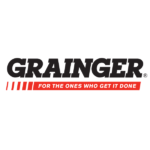
PESTEL is a strategic analytical tool used to analyse external factors affecting organizations. The acronym stands for political, economic, social, technological, environmental and legal factors. W.W. Grainger PESTEL analysis comprises the analysis of potential impact of these factors on profitability and long-term growth prospects of the global industrial supply company. Political Factors in W.W. Grainger PESTEL Analysis There is a wide range of political factors that can affect Grainger directly, as well as, indirectly. For example, government stability in international markets is one of the key political factors that can impact the performance of Grainger. Specifically, the global industrial supply company may face difficulties to grow the business in countries where there is a lack of government stability. Furthermore, if any government where company operates faces stability issues due to strikes, war or any other reasons, this can impose risks to Grainger properties located in the country. Activities of trade unions can be mentioned as another type of political factor that can affect the bottom line for the B2B distributor. Trade unions can demand and achieve higher wages for Grainger employees with negative implications on profitability of the business. Additional range of external political factors for Grainger includes level of bureaucracy and corruption, the extent of freedom of press, government trade controls and others. Economic Factors in W.W. Grainger PESTEL Analysis Grainger profitability and growth prospects are subject to a range of external economic factors. Changes in currency exchange rate is one of the main economic factors for the industrial supply company, because in 2019 the company generated 28% of its total revenues from international markets outside of its home market US.[1] Inflation rate can be highlighted as another significant economic factor for the worldwide distributor of industrial products, as increasing level of inflation erodes buyer purchasing power…
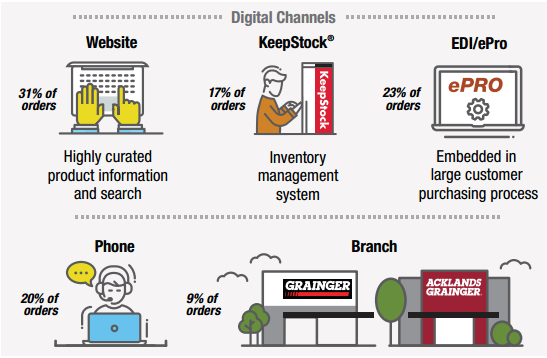
SWOT is an acronym for strengths, weaknesses, opportunities and threats related to organizations. The following table illustrates W.W. Grainger SWOT analysis Strengths 1. Experience, competence and knowledge in selling MRO products 2. Economies of scale 3. An extensive product range 4. Increasing share of sales via e-commerce Weaknesses 1. Substantial indebtness 2. Overdependence on home market in the US 3. Vulnerability to Amazon Business 4. Ineffective marketing strategy Opportunities 1. Increasing integration of Artificial Intelligence into various business processes 2. Engaging in value added activities for customers 3. Pursuing international market expansion strategy into developing countries 4. Emergence of competitor vulnerabilities Threats 1. Increasing strength of local distributors due to COVID-19 pandemic 2. Further loss of market share to Amazon Business 3. Inability to sustain competitive advantage 4. Changes in currency exchange rates. W.W. Grainger SWOT Analysis Strengths in W.W. Grainger SWOT Analysis 1. Established in 1925 by William W. Grainger – motor designer, salesman, and electrical engineer as a wholesale electrical sales company, by now the B2B distributor has an extensive experience of more than 90 years in industrial distribution. In-depth technical knowledge due to experience and know-how serves as a competitive advantage for the business and it plays an instrumental role in further expansion of product categories. 2. Grainger derives massive benefits from the economies of scale. The industrial products distributor sells about 1,7 million types of products supplied by about 5000 suppliers worldwide to more than 3,5 million customers internationally.[1] Immense scale of business operations allows Grainger to source products in bulk, negotiating low purchasing prices. Moreover, economies of scale benefit the business in terms of inbound logistics, warehousing and outbound logistics of products to end-users. 3. Arguably, Grainger covers the greatest range of MRO products among distributors worldwide. Unlike B2C business, in B2B distribution inclusion…
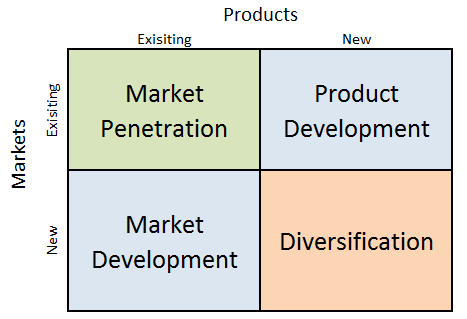
W.W. Grainger Ansoff Matrix is a marketing planning model that helps the global industrial supply company to determine its product and market strategy. Ansoff Matrix illustrates four different strategy options available for businesses. These are market penetration, product development, market development and diversification. W.W. Grainger Ansoff Matrix Within the scope of Ansoff Matrix, Grainger uses all growth strategies except diversification growth strategy in the following manner: 1. Market penetration. Market penetration involves selling existing products to existing markets. Grainger sells about 1,7 million types of MRO products covering a wide range of product categories.[1] The industrial supply company sustains market penetration business strategy via developing and maintaining relationships with customers through sales and service representatives and digital solutions. 2. Product development. This growth strategy is associated with developing new products to sell to existing markets. Grainger does not produce any product in-house, but continually expands its supplier base for new MRO products. Particularly, the worldwide distributor of industrial products is focused on expanding SKUs in its Zoro and MonotaRO subsidiaries to offset increasing competition from Amazon Business. In 2019 the company added about 1,5 million SKUs to its Zoro US assortment to increase it to approximately 3,5 million products.[2] 3. Market development. Market development strategy is associated with finding new markets for existing products. Currently, the B2B distributor has 456 branches and 30 distribution centres in US, Canada, Latin America, Japan and Europe. The worldwide distributor of industrial products may enter market in Asia in the foreseeable future[3]. Grainger enters new markets with Endless Assortment business model with a single online sales channel. Later, MRO products distributor may shift to High-Touch Solutions model in any given market if there is growing demand from large customers with more complex needs. 4. Diversification. Diversification involves developing new products to sell to new…
